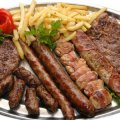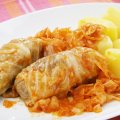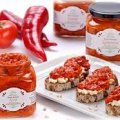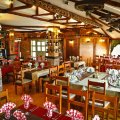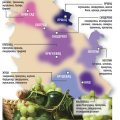Characteristics of Serbian Cuisine
Serbian cuisine is characterized by very diverse, high-calorie and spicy food. Dishes include use of meat, pastries, vegetables and dairy products. Habitually, people have three meals per day (breakfast, lunch and dinner), with lunch being the largest and the most important one. Beef ham, kajmak, ajvar, cicvara, slatko with wild rose and various specialties made from dried plums are considered as authentic Serbian meals. Like other national cuisines are not homogeneous, so it is with our own. Depending on the historical circumstances, climate and life conditions, serbian cuisine is different in some areas of the country: Vojvodina, Šumadija, Metohija, South and East Serbia. Šumadija cuisine - the most authentic sort of Serbian cuisine - Meal starts with appetizer consisting of smoked meat products, kajmak, cheese. Before appetizer guest are served with slatko made of fruit as a sign of appreciation and warm welcome. Soup is mandatory part of menu and as main course sarma, various dishes of cabbage, đuveč, paprika filed with meat. Roasted meat is usually offered as specialty as well as rich assortment of grilled dishes served with mandatory salad - ajvar, urnebes, or serbian salad. East Serbian cuisine is under the influence of Romanian and Bulgarian cuisine and dishes from milk, dairy products, whole grains, sheep and lamb meat. South Serbian cuisine is under influence of different Middle East cooking styles. Nutrition of that area is mainly consisted of paprika, not as a seasoning or spice but as a food. Appetizers, soups, main courses and salads are made of paprika, such as: paprika in cheese cream, dried paprika filled with cheese, Serbian soup, đuveč, papazjanija, salad from roasted paprika and paprika pickle. Metohija cuisine - On the territory of Kosovo and Metohija in the Middle Ages there was Serbian Empire with powerful dynasties under the rule of Stefan Uroš IV Dušan, Lazar and others. Very rich court life have been influencing development of the cuisine at that time which left a mark on nutrition habits of people on that territory. In later years there was a strong influence of Middle East cuisine without use of pork. Vojvodina cuisine was developed under the influence of the Austrian-Hungarian Monarchy and that is reason why are Vojvodina and Hungary cuisine very similar today.

